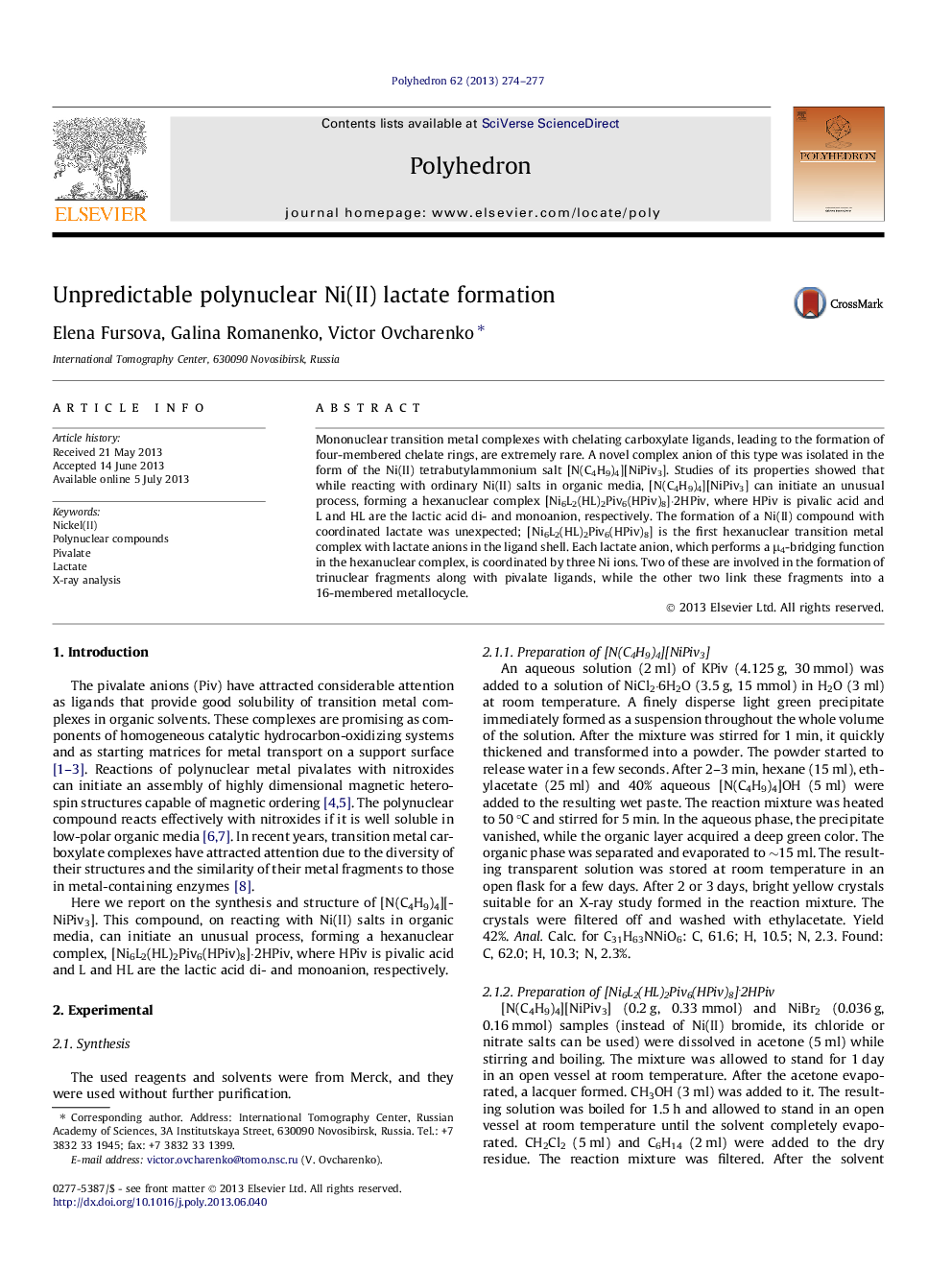| Article ID | Journal | Published Year | Pages | File Type |
|---|---|---|---|---|
| 1337215 | Polyhedron | 2013 | 4 Pages |
Mononuclear transition metal complexes with chelating carboxylate ligands, leading to the formation of four-membered chelate rings, are extremely rare. A novel complex anion of this type was isolated in the form of the Ni(II) tetrabutylammonium salt [N(C4H9)4][NiPiv3]. Studies of its properties showed that while reacting with ordinary Ni(II) salts in organic media, [N(C4H9)4][NiPiv3] can initiate an unusual process, forming a hexanuclear complex [Ni6L2(HL)2Piv6(HPiv)8]·2HPiv, where HPiv is pivalic acid and L and HL are the lactic acid di- and monoanion, respectively. The formation of a Ni(II) compound with coordinated lactate was unexpected; [Ni6L2(HL)2Piv6(HPiv)8] is the first hexanuclear transition metal complex with lactate anions in the ligand shell. Each lactate anion, which performs a μ4-bridging function in the hexanuclear complex, is coordinated by three Ni ions. Two of these are involved in the formation of trinuclear fragments along with pivalate ligands, while the other two link these fragments into a 16-membered metallocycle.
Graphical abstractN(C4H9)4][NiPiv3] was synthesized, whose complex anion has only pivalate anions as ligands that adopt a chelating coordination. The interaction of [N(C4H9)4][NiPiv3] with Ni(II) salts in organic media led to the formation of a mixed-ligand hexanuclear complex, [Ni6L2(HL)2Piv6(HPiv)8], where HPiv is pivalic acid, and L and HL are the lactic acid dianion and monoanion, respectively.Figure optionsDownload full-size imageDownload as PowerPoint slide
